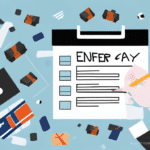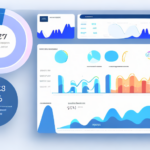How to Drive Repeat Purchases with Email Marketing
Email marketing remains a cornerstone for businesses aiming to drive repeat purchases and enhance customer loyalty. According to the Email Monday report, email marketing boasts an impressive ROI of $42 for every $1 spent in 2023, reaffirming its status as one of the most effective digital marketing channels. In this article, we delve into the strategies and best practices for leveraging email marketing to foster repeat purchases, including its significance, crafting an effective email strategy, and metrics to assess campaign success.
Understanding the Importance of Email Marketing for Repeat Purchases
Repeat purchases are vital for the sustainability and growth of any business. Email marketing serves as a pivotal mechanism for nurturing customer relationships and fostering loyalty. By maintaining consistent communication through regular emails, businesses can keep their brand at the forefront of customers' minds, thereby encouraging additional purchases.
Moreover, email marketing enables personalized messaging and tailored offers, which significantly increase the likelihood of customer engagement. According to a study by Campaign Monitor, personalized emails deliver six times higher transaction rates, highlighting the effectiveness of customization in email campaigns.
Furthermore, email marketing provides invaluable data and insights into customer behavior. By monitoring metrics such as open rates, click-through rates, and conversion rates, businesses can gain a deeper understanding of what resonates with their audience. This data-driven approach allows for the continuous refinement of email strategies, ensuring campaigns remain effective and aligned with customer preferences.
Crafting a Killer Email Marketing Strategy for Repeat Purchases
The cornerstone of a successful email marketing campaign is a well-defined strategy. Begin by establishing clear goals and identifying your target audience. Understanding who you want to reach and what actions you desire them to take is crucial for developing relevant and impactful email content.
Once goals and audience are defined, develop a content and messaging strategy that aligns with your objectives. This strategy may encompass regular newsletters, exclusive promotional offers, or personalized product recommendations based on past purchases. Incorporating dynamic content can further enhance the relevance of your emails, catering to the unique preferences of each subscriber.
Additionally, segmenting your email list based on customer behavior and preferences is essential. Analyzing data such as purchase history, browsing patterns, and email engagement allows for the creation of targeted segments. For instance, sending personalized product recommendations to customers who have previously shown interest in similar items can significantly boost repeat purchases.
Segmenting Your Email List for Better Targeting and More Sales
Effective segmentation transforms a generic email list into a targeted audience, enhancing both the relevance and effectiveness of your campaigns. By categorizing subscribers based on factors like past purchase behavior, demographics, and interests, you can craft highly personalized messages that resonate with each segment.
For example, tailoring content for customers who have made recent purchases differs from those who haven't interacted with your brand in a while. Personalized greetings, specialized offers, and relevant product suggestions can significantly increase conversion rates.
Moreover, segmentation allows for better analysis of campaign performance across different groups. Tracking metrics such as open rates, click-through rates, and conversion rates for each segment can provide insights into which strategies are most effective, enabling continuous optimization of your email marketing efforts.
Personalizing Your Emails to Increase Engagement and Loyalty
Personalization is a powerful tool in email marketing, driving higher engagement and fostering customer loyalty. Utilizing data from subscribers' past interactions, such as purchase history and browsing behavior, enables the creation of tailored messages that cater to individual preferences.
Incorporating personalization techniques like addressing subscribers by their names in the subject line or email body can create a more intimate and engaging experience. Additionally, recommending products based on previous purchases or offering personalized discounts can significantly enhance the relevance of your emails.
Beyond basic personalization, creating a highly personalized experience involves understanding and addressing the specific needs and interests of each subscriber. This level of customization not only increases engagement rates but also strengthens the emotional connection between the customer and the brand, leading to increased loyalty and repeat business.
Creating Compelling Email Content that Resonates with Your Audience
Engaging email content is fundamental to driving repeat purchases and maintaining customer interest. Your emails should provide value through informative, relevant, and engaging content that aligns with your subscribers' interests and needs.
Incorporate elements such as industry news, product updates, or valuable tips and advice to keep your audience informed and interested. Utilizing clear and concise language, compelling headlines, and visually appealing graphics can help your emails stand out in crowded inboxes.
Personalization plays a crucial role in content creation. By tailoring content to specific segments, you enhance the relevance and effectiveness of your emails. Implementing dynamic content that adapts based on factors like location, past purchases, or demographic information can further increase engagement.
Regularly analyzing and optimizing your email content is essential to ensure it continues to resonate with your audience. Conducting A/B tests on different subject lines, calls to action, or email designs can provide insights into what works best, allowing for continuous improvement of your email marketing strategy.
Designing Eye-Catching Emails that Get Opened and Clicked On
The design of your emails plays a pivotal role in capturing attention and driving engagement. A visually appealing and user-friendly design can significantly enhance the effectiveness of your email campaigns.
Incorporate high-quality images, bold text, and clear calls-to-action (CTAs) to guide subscribers towards desired actions. Testing different design elements, such as color schemes, layouts, and font styles, can help identify the most effective combinations for your audience.
Ensuring your emails are mobile-friendly is equally important in today’s mobile-centric world. With a significant portion of emails being accessed on mobile devices, responsive design is crucial. Utilize single-column layouts, larger font sizes, and concise messaging to enhance readability and interaction on smaller screens.
Optimizing Your Email Campaigns for Mobile Devices
With the increasing use of mobile devices for accessing emails, optimizing your campaigns for mobile is essential. Responsive email designs ensure that your messages are easily readable and navigable on various screen sizes.
Key strategies for mobile optimization include:
- Using a single-column layout for simplicity and ease of navigation.
- Implementing larger font sizes to enhance readability.
- Ensuring CTAs are prominent and easily tappable.
- Minimizing the use of heavy images that may slow down loading times.
Additionally, concise content is crucial for mobile users who often consume emails on-the-go. Employ short paragraphs, bullet points, and impactful headlines to convey your message effectively.
Testing your emails across multiple devices and email clients can help identify and rectify any display issues, ensuring a seamless experience for all subscribers.
Using Social Proof to Boost Credibility and Conversions
Social proof is a compelling element that can enhance the credibility of your email campaigns and drive conversions. By showcasing positive reviews, testimonials, and endorsements, you can build trust and encourage subscribers to take action.
Incorporating elements such as customer testimonials, user-generated content, and influencer endorsements can significantly boost the credibility of your emails. For example, featuring a testimonial like, "Join the thousands of satisfied customers who have transformed their businesses with our solutions," can create a sense of trust and urgency.
Additionally, highlighting endorsements from reputable brands or industry experts can further solidify your credibility. Including logos or quotes from recognized organizations adds an extra layer of trust, making subscribers more likely to engage with your content and offerings.
Leveraging the Power of Scarcity to Drive Urgency and Sales
Scarcity is a psychological principle that can effectively drive urgency and boost conversions in your email campaigns. By emphasizing limited-time offers, exclusive deals, or low stock levels, you create a sense of urgency that encourages subscribers to act swiftly.
Effective strategies to leverage scarcity include:
- Highlighting limited-time discounts or promotions to prompt immediate action.
- Showcasing low stock alerts to instill a fear of missing out (FOMO).
- Offering exclusive deals to email subscribers as a reward for their loyalty.
Combining scarcity with social proof or personalized recommendations can amplify its effectiveness, leading to higher engagement and increased sales.
Nurturing Relationships with Email Automation and Drip Campaigns
Email automation and drip campaigns are invaluable for nurturing long-term relationships with your subscribers. By automating a series of targeted emails based on subscriber behavior or interests, you can maintain consistent engagement and encourage repeat purchases.
Examples of effective automated campaigns include:
- Welcome Series: Introduce new subscribers to your brand and offerings, setting the stage for future interactions.
- Re-engagement Campaigns: Reach out to inactive subscribers with personalized incentives to reignite their interest.
- Post-Purchase Follow-ups: Send thank-you emails, request feedback, or suggest complementary products based on recent purchases.
These automated sequences ensure that your brand remains relevant and top-of-mind, fostering trust and encouraging ongoing loyalty from your customers.
Measuring the Success of Your Email Marketing Efforts with Analytics
Evaluating the performance of your email marketing campaigns is crucial for understanding their effectiveness and identifying areas for improvement. Key metrics to track include:
- Open Rates: Indicate how many recipients are opening your emails, reflecting the effectiveness of your subject lines.
- Click-Through Rates (CTR): Measure the percentage of recipients clicking on links within your emails, showing engagement levels.
- Conversion Rates: Track the number of recipients completing desired actions, such as making a purchase or signing up for a webinar.
- Revenue Generated: Assess the financial impact of your email campaigns, linking email activities to actual sales.
Utilizing tools like Google Analytics or email marketing platforms’ built-in analytics can provide comprehensive insights into your campaign performance. Additionally, conducting A/B testing on various elements such as subject lines, CTAs, and email designs can help optimize your campaigns for better results.
Avoiding Common Mistakes That Can Sabotage Your Email Campaigns
While email marketing is highly effective, certain missteps can undermine your campaigns. Common mistakes to avoid include:
- Overloading Subscribers with Emails: Bombarding your audience with excessive emails can lead to unsubscribes and diminished engagement.
- Using Generic or Overly Promotional Language: Generic content lacks personalization, reducing the impact of your messages.
- Neglecting Mobile Optimization: Failing to optimize emails for mobile devices can hinder accessibility and engagement.
- Ignoring Data and Analytics: Not leveraging data to inform your strategies can result in ineffective campaigns.
By steering clear of these pitfalls and focusing on delivering meaningful, valuable content, you can enhance the effectiveness of your email marketing efforts and drive sustained repeat purchases.
Key Takeaways: Tips and Tricks for Driving Repeat Purchases with Email Marketing
- Maintain Consistent Communication: Use email marketing to stay connected with your customers and encourage repeat business.
- Define Clear Goals and Target Audience: Establish what you aim to achieve and who you want to reach before developing your email strategy.
- Segment Your Email List: Enhance targeting and increase sales by dividing your email list based on specific criteria.
- Personalize Your Emails: Boost engagement and loyalty by tailoring your messages to individual subscriber preferences.
- Create Compelling Content: Develop informative and engaging content that resonates with your audience.
- Design Eye-Catching Emails: Use visually appealing design elements to ensure your emails are opened and interacted with.
- Optimize for Mobile Devices: Ensure your emails are easily readable and navigable on all devices.
- Leverage Social Proof and Scarcity: Use testimonials and limited-time offers to build credibility and drive urgency.
- Nurture Relationships with Automation: Utilize automated and drip campaigns to maintain ongoing engagement.
- Measure Success with Analytics: Track key metrics to assess performance and inform future strategies.
- Avoid Common Mistakes: Steer clear of pitfalls like over-emailing and neglecting personalization to enhance campaign effectiveness.
By implementing these strategies and adhering to best practices in email marketing, you can significantly drive repeat purchases, strengthen customer loyalty, and achieve sustained business growth.




















